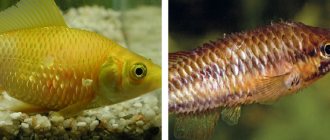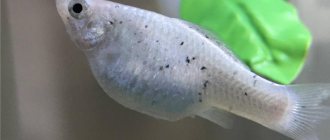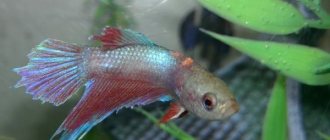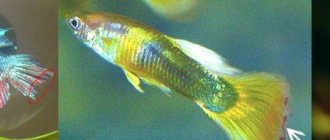Parasitic diseases in humans are highly prevalent, especially in childhood. Helminth infections can last a long time in the body, being discovered by chance during routine examinations in stool analysis. One of the most common parasites are small white worms in the stool: pinworms. Pathology has its own complications, so you definitely need to know about it and diagnose it in time.
What are the little white worms called?
Parasites can be found in human feces. If the worms are white, then these are most likely pinworms. They are most often found in the intestines of children due to the transmission characteristics of the pathogen. The disease caused by pinworms is called enterobiasis. The most common cause of pinworms is the patient's failure to comply with basic hygiene rules, as well as contamination of household items with the pathogen.
The main organ in which pinworms parasitize is the intestines, but in rare cases they can be found in other body systems - this is most often due to a weakness of the immune system. The worms are white, round, thin and small – they can reach 13 mm in length and about half a millimeter in thickness.
Roundworms
If we talk about the varieties of nematodes, roundworms are one of the most prominent representatives of the class. Their females can reach a length of 45 cm, and the roundworm enters the body through fresh but poorly washed food, or through food on which, for example, insects, such as flies, have sat. As soon as roundworm begins its formation in the human body, it immediately moves through the organs, which subsequently causes harm not only to the liver, but also to the lungs.
Why are white worms found in stool?
Pinworms enter the gastrointestinal tract (mainly the large intestine), so they are excreted in the feces. In the intestine, the helminth receives all the necessary nutrients for its growth and reproduction.
Routes of infection
The helminth is transmitted to a healthy person through dust and household items that contain pinworm eggs. They get there only if they come into contact with a person who has enterobiasis. A sick person who has pinworms in his stool is potentially dangerous to others. The main mechanism of transmission is fecal-oral: pathogen eggs enter the mouth through dirty hands and food. Self-infection is also possible: when eggs that have already been excreted with feces come back onto the hands and mouth. The majority of patients are children: they explore the world with the help of their hands and mouth, and these are the main factors in the transmission of the disease. Treatment of the disease consists not only in prescribing drugs: it is necessary to treat the patient’s bed linen and all other household items that he touched.
Toxocars
Toxocara causes the development of such a terrible disease as toxocariasis, which, even with proper treatment, often causes relapses.
According to statistics, our smaller brothers are considered the main carriers of Toxocara eggs. With their feces, the larvae usually remain on the ground, after which they enter directly into the human digestive tract through various means.
Depending on the degree of infection of the body, the spread of larvae and human immunity in general, four forms of the disease are distinguished:
- ophthalmic;
- cutaneous;
- neurological;
- visceral, occurring with a huge number of larvae.
Symptoms of enterobiasis
If there are not many pinworms in the intestines or their entry occurred recently, signs of the disease may be nonspecific or completely absent. If they begin to actively multiply, symptoms of enterobiasis arise: patients complain of feeling unwell due to itching in the anus, which increases in the evening and night hours. With a long course of the disease in the absence of adequate therapy, the number of pinworms in the intestines quickly increases, so the itching becomes painful, and patients cannot sleep peacefully. In the typical course of the disease, itching in the anus is observed for 1-3 days, after which it fades away for a while, appearing with renewed vigor after a couple of weeks.
Due to constant itching and scratching, small abrasions and then cracks form in the anal area. Various bacteria can easily penetrate through damaged skin, causing a secondary infection. Also, as a result of scratching, dermatitis occurs, which only aggravates the course of the disease.
Symptoms of the disease include various intestinal disorders: there may be diffuse abdominal pain, loose stools mixed with mucus or blood. In some cases, you can see the clinic of appendicitis: most often this happens in the presence of a secondary infection caused by bacteria.
In cases where enterobiasis lasts for a long time, the patient’s condition gradually worsens: sleep is disturbed, headaches, weakness, fatigue, and performance decrease.
Women may experience gynecological diseases: inflammation of the appendages, uterus, vulvovaginitis. All of them are accompanied by a corresponding clinic.
Whipworms
Whipworms are long white worms, reaching 5 cm. They feed on blood and the mucous membrane of the digestive canal. They are classified as geohelminths because soil is required for the development of eggs. Infection occurs through contaminated vegetables, fruits and hands. The consequences of helminthiasis, especially in children, are severe diarrhea, as well as delayed growth and development.
White worms found in the stool of an adult
Pinworms are detected less frequently in the feces of adults than in children. Most often, they pick up pinworms from their own children, therefore, if this helminth is found in an adult, the whole family and his close circle need to be examined. The symptoms of the disease are the same as in childhood; in women, the disease can be complicated by inflammation of the genital organs.
Hookworm
Small white worms in humans can also be represented by hookworms. Their parasitism is accompanied by anemia, the appearance of large ulcers, and digestive disorders. The larvae can penetrate the skin, which leads to burning, itching, and redness at the sites of their penetration. Hookworm disease is a dangerous helminthiasis common in regions where it is warm and humid most of the year.
Presence of pinworms in pregnant women
During the period when a woman is carrying a child, a large load falls on all body systems. Immunity decreases: due to this, the body’s susceptibility to the action of pathogenic agents increases. Helminth infections are also detected in pregnant women, which can negatively affect the course of pregnancy.
Pinworms live in the intestines of the expectant mother, but they do not penetrate the placental barrier. This means that a child in the womb cannot get enterobiasis. But the symptoms of the disease in a woman can disrupt the physiological course of pregnancy.
The danger of enterobiasis during pregnancy is that the likelihood of inflammatory complications and secondary infections against the background of weak immunity is higher. For normal growth, the helminth needs nutrients, which it takes from the woman. As a result, the woman and the fetus do not receive enough vitamins and microelements necessary for a favorable pregnancy. Constant itching disrupts a woman’s sleep and psychological comfort, which also negatively affects the condition of the fetus.
After birth, enterobiasis is dangerous because a mother can infect her baby during feeding, through toys and other objects.
Diagnostics
The doctor must first take a medical history from the patient. The living and working conditions of the patient are determined, whether there has been recent contact with infectious patients, whether any of the family members have suffered from enterobiasis and other helminthiases. Be sure to ask the woman about the presence or absence of pregnancy - this is important for selecting drugs for treatment. The main method for diagnosing pinworms is stool examination. A scraping is made from the perianal area, which is subsequently examined under a microscope. The disease can be suspected by a blood test: it will have elevated eosinophils, which indicate the development of hypersensitivity (increased in almost all helminthiasis).
Preventing moths
The following steps will help prevent food moths from appearing in the kitchen:
- since the main reason for the penetration of moths into the house is the purchase of contaminated products, when purchasing groceries, dried fruits and sweets in a store or market, you must carefully inspect them for the presence of larvae;
- You should not make large stocks of cereals and pasta, and the condition of those stored at home should be checked periodically;
- It is very important to store food correctly; tightly sealed glass or metal containers are best suited for this;
- regularly clean the kitchen, not bypassing shelves and cabinets;
- frequently ventilate the kitchen (open cabinet doors while ventilating);
- When cleaning, wipe the inside surfaces of shelves and kitchen cabinets with a vinegar solution.
In addition, you can use natural repellents. For example, lay out dried citrus peels, place a pot of geraniums on the windowsill, or use an aroma lamp and pour lavender, lemon, or fir oils into it.
Treatment with medications
Medicines can help fight worms. They are potent, so they should be taken only after consulting a doctor. This will prevent unwanted side effects. This is especially true for young children and pregnant women.
Modern drugs for the treatment of this helminthiasis are Pyrantel, Mebendazole and others. Before starting treatment with the drug, you need to reconsider your diet and temporarily avoid foods that contribute to constipation. The day before, it is recommended to eat soups, fermented milk products to stimulate motor skills, and you can eat fruits. The medication is prescribed in the morning in a dosage determined by the doctor in accordance with the condition of the body and concomitant diseases. If necessary, the day before taking the anthelmintic, the doctor prescribes a laxative to cleanse the intestines.
Itching and burning in the perianal area are relieved with antihistamines (Loratadine, Claritin and others). After the patient has taken an anthelmintic drug, he may experience signs of toxicosis: this is due to the massive death of the parasite in the intestines. In order to prevent the development of toxicosis, it is recommended to take enterosorbents, but only after 24 hours from the moment of taking the anthelmintic. This interval must be observed in order for the main remedy to have a full effect on the body, and enterosorbents reduce its effectiveness.
Personal hygiene and sanitary measures
A particularly important point is to strengthen personal hygiene measures. This is necessary to prevent self-infection. Hygiene rules are as follows:
- change underwear and bed linen every day until the disease is completely eliminated,
- regular hand washing with antiseptic soap before eating, as well as after using the toilet and going outside,
- cut your nails short (to prevent dirt from accumulating under them),
- treating household items with disinfectant solutions,
- wet cleaning of the apartment.
After washing bedding and underwear, it is necessary to iron them with a hot iron, since pinworm eggs can remain in the fabric, but high temperatures will certainly eliminate them. It is very important to follow these rules, because taking medications alone will not eliminate the disease: pinworm infection will occur again and again.
Drug therapy
Drug therapy is prescribed only by a helminthologist.
If the white worm turns out to be a pinworm, therapy is selected for the adult, in which an anthelmintic drug is used. Most often, doctors advise taking medications such as Vormil, Pyrantel, and Levamisole. After the first tablet is taken, you can take a laxative that will help remove dead specimens from the body and prevent intoxication. If intestinal problems arise due to enterobiasis, it is recommended to take medications that will relieve inflammation and dysbiosis. During treatment, drugs are used that restore the level of hemoglobin in the blood, as well as vitamins and mineral complexes that were lost due to heavy helminthic infestation.
Treatment of young children
If a child has worms and is not yet a year old, it is not recommended to use medications. The doctor will advise the mother to monitor the baby’s hygiene, lubricate the skin around the anus with zinc ointment, and wash it after each bowel movement. But the rest of the family needs to undergo preventive therapy, which will help prevent the spread of enterobiasis and repeated self-infection.
Folk remedies against worms
Herbal remedies and other substances used in folk medicine can have a milder effect on the body and are perfect as a complement to the main medicine for pinworms.
- Garlic – to do this you need to grind two cloves, then dilute the resulting mass with water. You should consume this product in small quantities (about 1-2 tablespoons) in the evening with herbal tea or water. The duration of using garlic is 3 days, then you need a break for 7 days.
- Pumpkin seeds are the most popular folk recipe. Cucurbitin, which is found in the shell of pumpkin seeds, has a detrimental effect on parasites, helping to immobilize them and remove them from the body. You need to eat pumpkin seeds raw; you can crush them and eat the pulp for three days, after which you take a break for a couple of days. The optimal time to use them is morning. You need to drink the seeds with a glass of water, and then do not eat for 3-4 hours.
- Beetroot juice is an excellent remedy in the fight against helminthiasis. Twice a day you need to drink 100 ml of beet juice. The duration of its administration is two weeks.
- Onions - chop, then add a teaspoon of salt and a little (about 50 ml) vegetable oil. This mixture is taken 5 days in the evening.
- Herbal infusions. To rid the intestines of worms, tansy flowers, watch leaves and centaury are taken in equal quantities. Two tablespoons of this mixture are poured into 300 ml of boiling water and infused. You need to drink this infusion on an empty stomach after waking up and in the evening, and then you should not eat food for about 2-3 hours. Duration of use – 3 days.
- Sagebrush. Take 1 tablespoon of dried wormwood and add 400 ml of hot water. Let it sit for 30 minutes. After the infusion has been strained, you can take it on an empty stomach in the evening before bed. In the morning the procedure is repeated. The patient should take the wormwood infusion twice - in the evening and in the morning, after which a break of 4 days is necessary, and then the procedure is repeated again.
Getting rid of worms is a long process, but if you listen to all the doctor’s recommendations and receive comprehensive treatment, you can avoid repeated cases of infection of yourself and your loved ones. Do not forget about personal hygiene, because unwashed hands are the main route of transmission of this helminthiasis.
Additional information on the topic can be found in the video:
It is possible to defeat parasites!
Antiparasitic Complex® - Reliable and safe removal of parasites in 21 days!
- The composition includes only natural ingredients;
- Does not cause side effects;
- Absolutely safe;
- Protects the liver, heart, lungs, stomach, skin from parasites;
- Removes waste products of parasites from the body.
- Effectively destroys most types of helminths in 21 days.
There is now a preferential program for free packaging. Read expert opinion.
Read further:
What worms look like in children: roundworms, pinworms, flukes and tapeworms
How to quickly remove worms at home using medications and folk remedies
Treatment of worms in children at home: the best folk recipes for self-medication
What do worm larvae look like: round and tapeworms, flukes
How to get rid of roundworms at home using tablets and folk recipes
Pork tapeworm: symptoms, prevention, and treatment methods for pork tapeworm
general characteristics
A flatworm about 2 cm long, the white planaria, can be found at the bottom of the pond and on the leaves of aquatic plants. It glides along the bottom with the help of a barely noticeable wave-like contraction of the body muscles. This is the main “achievement” of flatworms.
The body has bilateral symmetry. This is due to an active lifestyle, highlighting the anterior end of the body. Only one plane of symmetry can be constructed through the longitudinal axis of the body.
Like coelenterates, worms distinguish between top and bottom. Below is the bottom, the source of food, and above are all the dangers. But when moving along the bottom, differences also arise between the front and rear ends of the body. Moving forward, the animal searches for food, and from behind the food has already been eaten. It is much more convenient when the mouth and sensory organs are at the front end of the body. Therefore, only one plane of symmetry can be drawn through the long axis of the worm, which divides it into equal halves. So, as a result of movement, the animals’ bodies became bilaterally symmetrical.
Compared to coelenterates, flatworms are the first three-layered animals: in addition to ectoderm and endoderm, they have developed mesoderm. They do not have a body cavity, and the spaces between the organs are filled with connective tissue. The digestive system does not have an anus, and undigested residues are eliminated through the mouth. Flatworms are bisexual animals, or hermaphrodites.
Where do they come from?
There can be several options for the appearance of worms of different colors:
- A clothes moth larva (actually a butterfly caterpillar with microscopic limbs). You can usually find them in underwear that has been in the closet for a long time.
- The larvae of the carpet beetle (carpet beetle) are brownish, with protruding fibers.
- The larvae of the beetle grinder (lives in furniture made of wood) are white and quite large. But they can only get into bed by accident and in single quantities.
- Flea larvae are very small and harmless to humans. They are rare.
- Fly larvae (in summer, if there is spoiled food lying around).
Basically, their appearance is random. You can get rid of them by shaking out the contents of the closet, washing them, and using disinfectants (they can be purchased in pharmacies and stores).
If after cleaning the worms appear again, this is a reason to sound the alarm, since you are dealing with pinworms .











